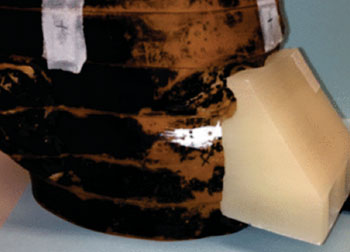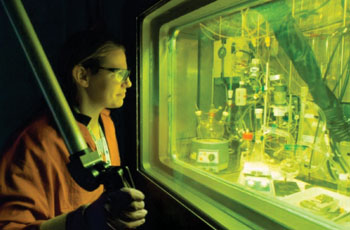Nuclear Medicine
New Imaging Collaboration Could Improve Treatment and Quality of Life of Prostate Cancer Patients
A development agreement between a large medical imaging vendor and smaller medical device company promises to help promote a unique minimally invasive treatment that can ablate the prostate gland. More...27 Jul 2015

New PET Tracer Capable of Accurately Pinpointing Life-Threatening Blood Clots
Researchers have demonstrated that a new molecular imaging technique using Positron Emission Tomography and a new radiotracer Cu-64 FBP8 can accurately pinpoint nearly all thrombi throughout the body of laboratory rats. More...29 Jun 2015

In Other News
New Insights into the Diagnosis of Alzheimer's and Dementia Using PET Presented at SNMMI 2015
New Family of CZT-Based SPECT Cameras Launched
Fusion Imaging Improves Surgical Guidance for Treatment of Congenital Heart Disease
Innovative Patient Positioning System for Cancer Treatment Commissioned
New Protein MRI Contrast Agent Developed for Liver Cancer Imaging
Human Prostate Cancer Study Evaluates New Imaging Biomarker
Survey Assesses Patients’ Understanding of Own Imaging Exams
Preventing Unnecessary Radiotherapy for Patients with Early-Stage Hodgkin’s Lymphoma
New Innovative Imaging Technique Used for Diagnosing CTE in Athletes
Funding Approved for Major New Study on the Value of PET Scans for Alzheimer's Disease
Innovative Technique Promises New Inroads into the Diagnosis and Management of Pain
Research Underway on Novel Lung Cancer Radiotherapy Treatment
PET/CT Dramatically More Effective at Diagnosing Heart Problems Than SPECT
Collaboration Agreement to Share Best Practices for Improved Cancer Treatment
Researchers Develop Computer Simulation to Help Improve Radiation Therapy for Cancer Patients
Combined PET/MR Imaging Technique Can Diagnose Cause of Unclear Foot Pathologies
Novel Coil Helps Surgeons Track Tumor Site
Cancer Treatment Center Upgrades Proton Therapy Treatment to Target Complex Tumors
Precancerous Breast Changes in Women with BRCA Gene Identified Using MR Spectroscopy
New Standards for Administration of Intravascular Contrast Agents for Adults
Construction of Australian Nuclear Medicine Production Plant Begins
PET/CT Improves Assessment of Oesophageal Malignancy
New Screening Method Can Significantly Improve Detection of Breast Cancers in Dense Breast Tissue
The Nuclear Medicine channel of MedImaging brings the latest in research and clinical radiotherapy, proton therapy, PET-CT, SPECT, SQUID, radiopharmacology, scintillography, trends and safety concerns.










